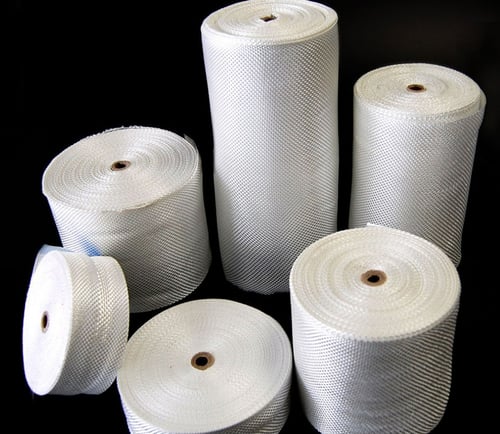
Blankets, boards, wraps ... In the wide world of insulation solutions, you have seemingly endless options to choose from. Fiberglass tape is one more material designed for specific uses — especially throughout construction, automotive, marine and electrical industries — and it might be the best fit for your project. Discover what fiberglass tape is and how it’s used, and get pointers on how to install it correctly from the pros at Distribution International.
What Is Fiberglass Tape?
Fiberglass tape is a texturized, reinforced, woven textile used to insulate pipes and joints. It’s made of twisted glass filament strands woven at right angles, creating fiberglass cloth. To maintain its structural integrity and keep the cloth from unraveling, fiberglass tape contains selvage, or self-finished, edges.
However, did you know that contrary to what its name implies, fiberglass tape is not actually tape at all? It does not have adhesive backing but is referred to as a tape because of its appearance and the widths it comes in.
Applications for Fiberglass Tape
Fiberglass tape is intended for highly specific applications and is common for marine use. Boat builders and repairers use fiberglass tape to reinforce targeted areas and to beef up corners and glassing seams. Fiberglass tape is compatible with epoxy, polyester or vinyl ester resins.
Example: Do you need to make an internal repair? Reinforce the interior bulkheads with fiberglass tape to stabilize the cabin.
Using fiberglass tape doesn’t begin and end with marine applications, however. Coated fiberglass tape is also used in high-temperature applications, making the materials highly versatile. Woven fiberglass tape is temperature rated up to 1000 F with low thermal conductivity and high tensile strength, so it is also well-suited for gasketing, sealing, packing, lagging, thermal insulation and encapsulation projects.
Example: Wrap fiberglass tape around water and steam pipes, hydraulic lines and auto exhaust to provide enhanced insulation.
Differences Between Types of Fiberglass Tape
All fiberglass tape is not created equal. It is available with high-temperature coatings made from inorganic materials, improving temperature and abrasion resistance. Tape comes in 2-12 inch widths, each best suited to unique scenarios:
- Narrow tapes wet-out or adhere faster for small crack and joint repairs, compared to wider cracks that require more reinforcement and wider tape.
- Small fiberglass sheets accommodate single projects, whereas large fiberglass cloth rolls are ideal for more regular use.
How to Install Fiberglass Tape
Installing fiberglass tape is not rocket science, but you do have to follow a process to ensure the safety of both yourself and the component you wish to wrap. With that in mind, installation is as easy as 1-2-3:
1. Spiral tape around the pipe or component.
When installing fiberglass tape, you must do it in layers. This ensures a strong seal.
2. Ensure the layers overlap.
When spiraling the material around the item you are protecting, overlap it to further prevent gaps.
3. Tighten the spiral.
Finally, loop or tie the end of the tape to the beginning of the pipe. This creates a tight spiral and maximizes efficacy.
Get the Right Fiberglass Tape for Your Needs
Fiberglass tape comes in handy in a variety of situations, especially marine and high-heat applications. The high-temperature resistance and durability ensure that pipes and components are well-protected in all situations, as long as you use the right size and install the tape according to best practices.
Are you in the market for fiberglass tape? Distribution International carries over 30 varieties from the industry’s top brands. Check out our selection to find the right fit for your project.